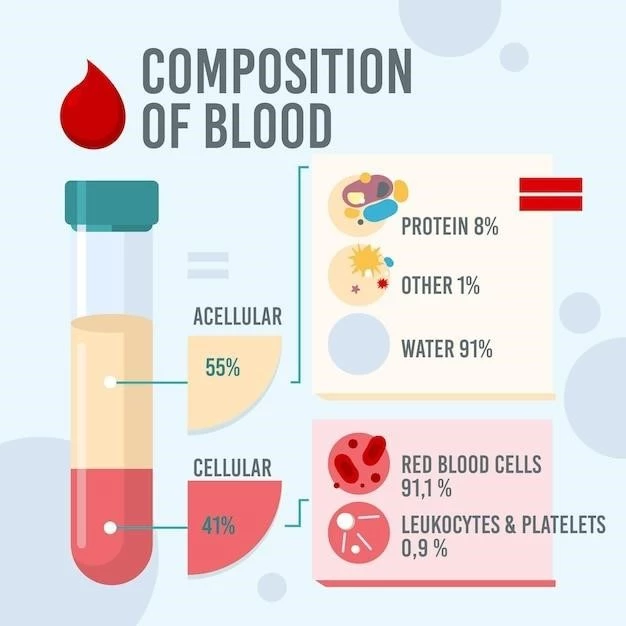Comprehensive Guide to Cryoglobulinemia
Causes of Cryoglobulinemia
Symptoms of Cryoglobulinemia
Treatment Options for Cryoglobulinemia
Diagnosis of Cryoglobulinemia
Risk Factors for Cryoglobulinemia
Lifestyle Changes for Managing Cryoglobulinemia
Complications of Cryoglobulinemia
Research Updates on Cryoglobulinemia
Introduction to Cryoglobulinemia
Cryoglobulinemia is a rare condition characterized by the presence of abnormal proteins in the blood that can lead to various symptoms and complications. It is often associated with underlying autoimmune disorders or infections. Understanding the causes, symptoms, treatment options, and risk factors for cryoglobulinemia is essential for proper management and care of individuals affected by this condition. This comprehensive guide aims to provide detailed insights into cryoglobulinemia to aid healthcare professionals and patients in navigating this complex disorder.
Causes of Cryoglobulinemia
Cryoglobulinemia can be caused by various factors including underlying infections such as hepatitis C, autoimmune conditions like lupus, and certain cancers. The abnormal proteins, known as cryoglobulins, form due to the immune system’s response to these triggers. In some cases, the exact cause remains unknown, classified as idiopathic cryoglobulinemia. Understanding the underlying causes of cryoglobulinemia is crucial for determining the most appropriate treatment approach and managing this complex disorder effectively.
Primary Causes
Primary causes of cryoglobulinemia are typically related to underlying autoimmune diseases, such as rheumatoid arthritis or systemic lupus erythematosus. In these cases, the immune system mistakenly attacks healthy tissues, leading to the production of cryoglobulins. Genetic factors and environmental triggers may also play a role in predisposing individuals to develop primary cryoglobulinemia. Understanding the specific autoimmune conditions involved is crucial for diagnosing and managing this form of the disorder effectively.
Secondary Causes
Secondary causes of cryoglobulinemia are often associated with conditions such as chronic infections like hepatitis C, certain cancers including multiple myeloma, and some medications. These external factors can stimulate the immune system to produce cryoglobulins, leading to the development of secondary cryoglobulinemia. Identifying and addressing the underlying infections or malignancies is essential in managing this form of the disorder effectively. Collaborative care involving specialists from various medical fields is crucial for a comprehensive approach to secondary cryoglobulinemia.
Symptoms of Cryoglobulinemia
The symptoms of cryoglobulinemia vary and can include skin manifestations like purpura and ulcers, joint pain, peripheral neuropathy, and organ involvement such as kidney damage. Severe cases may present with life-threatening complications like vasculitis or severe organ dysfunction. It is essential for healthcare providers to recognize these diverse symptoms and promptly evaluate and manage patients with cryoglobulinemia to prevent long-term complications and improve quality of life.
Common Symptoms
The common symptoms of cryoglobulinemia may include skin rashes, joint pain, weakness, fatigue, and neuropathy. Patients often experience cold-induced symptoms like Raynaud’s phenomenon where fingers or toes turn white or blue upon exposure to cold. These early signs warrant medical evaluation to determine the underlying cause and initiate appropriate management strategies to alleviate symptoms and prevent disease progression.
Severe Symptoms
Severe symptoms of cryoglobulinemia can involve life-threatening complications such as kidney failure, severe vasculitis leading to tissue damage, and neurological deficits. Patients may experience rapid deterioration in kidney function, skin ulcers, and complications related to vascular involvement, requiring immediate medical intervention. Early recognition of these severe symptoms and aggressive management are crucial to prevent permanent organ damage and improve patient outcomes in individuals with advanced cryoglobulinemia.
Treatment Options for Cryoglobulinemia
Management of cryoglobulinemia typically involves a combination of medications such as immunosuppressants, antivirals for hepatitis C-associated cases, and rituximab to target abnormal immune cells. In severe cases, plasmapheresis may be necessary to remove cryoglobulins from the blood; Immunosuppressive therapy aims to control inflammation and reduce the immune system’s attack on healthy tissues. Collaborating with a multidisciplinary healthcare team is essential to tailor treatment strategies to individual patients and ensure optimal management of cryoglobulinemia.
Medications
Medications play a key role in managing cryoglobulinemia. Immunosuppressants like corticosteroids, cyclophosphamide, and azathioprine help reduce the immune system’s abnormal response. Antivirals such as direct-acting antivirals (DAAs) are vital for treating hepatitis C-associated cryoglobulinemia. Rituximab, a monoclonal antibody, targets specific immune cells involved in the disease process. The choice of medication depends on the underlying cause and severity of cryoglobulinemia, highlighting the importance of personalized treatment plans guided by healthcare professionals.
Plasmapheresis
Plasmapheresis, a procedure to remove blood plasma containing cryoglobulins, is used in severe cases of cryoglobulinemia to quickly reduce the circulating levels of these abnormal proteins. By filtering the blood and replacing it with plasma or a plasma substitute, plasmapheresis helps alleviate symptoms related to cryoglobulinemia flare-ups. This treatment modality is often employed in conjunction with other therapies to manage acute manifestations and stabilize patients with refractory or life-threatening cryoglobulinemia complications.
Immunosuppressive Therapy
Immunosuppressive therapy is a cornerstone in the management of cryoglobulinemia, aiming to modulate the immune response and reduce inflammation. Medications like corticosteroids, cyclophosphamide, and rituximab are commonly used to target the abnormal immune activity seen in cryoglobulinemia. By dampening the immune system’s response, immunosuppressive therapy helps alleviate symptoms, prevent disease progression, and improve overall quality of life for individuals with cryoglobulinemia. Close monitoring and adjustment of immunosuppressive regimens by healthcare providers are essential for optimal treatment outcomes.
Diagnosis of Cryoglobulinemia
Diagnosing cryoglobulinemia involves laboratory tests to detect cryoglobulins in the blood, including serum protein electrophoresis and immunofixation. A biopsy of affected tissues like skin or kidneys may be necessary to confirm the presence of cryoglobulin deposits. Clinicians also assess symptoms, medical history, and underlying conditions to establish a comprehensive diagnosis. Early and accurate diagnosis of cryoglobulinemia is vital for initiating timely treatment and preventing potential complications associated with the disorder.
Laboratory Tests
Laboratory tests play a crucial role in the diagnosis of cryoglobulinemia. Serum cryoglobulin testing, serum protein electrophoresis, and immunofixation are commonly employed to identify and quantify abnormal proteins in the blood. Complement levels and autoimmune markers may also be assessed to evaluate the underlying immune response. Additionally, imaging studies such as ultrasound or MRI help assess organ involvement. A comprehensive approach utilizing various laboratory tests aids in confirming the presence of cryoglobulinemia and guiding appropriate treatment decisions.
Biopsy
A biopsy is a valuable diagnostic tool in confirming cryoglobulinemia by analyzing samples of tissues such as skin or kidneys for the presence of cryoglobulin deposits. Skin biopsies can reveal characteristic vasculitis or inflammation patterns, while kidney biopsies help assess renal involvement. Histopathological examination assists in determining the extent of tissue damage and guiding treatment decisions. In conjunction with other diagnostic tests, biopsies provide essential information for a comprehensive evaluation of cryoglobulinemia and the associated organ manifestations.
Risk Factors for Cryoglobulinemia
Several risk factors contribute to the development of cryoglobulinemia, including chronic infections like hepatitis C, autoimmune disorders such as rheumatoid arthritis and lupus, certain cancers like lymphoma, and exposure to cold temperatures. Genetic predisposition and older age are also associated with an increased risk. Understanding these risk factors is essential for identifying individuals who may be susceptible to cryoglobulinemia and implementing preventive strategies or targeted monitoring to improve outcomes in at-risk populations.
Lifestyle Changes for Managing Cryoglobulinemia
Individuals with cryoglobulinemia can benefit from certain lifestyle modifications to help manage the condition. Maintaining a balanced diet rich in fruits, vegetables, and whole grains while limiting processed foods can support overall health. Regular physical activity tailored to individual capabilities improves circulation and overall well-being. Avoiding exposure to cold temperatures and managing stress through relaxation techniques can help prevent symptom exacerbations. Patients should collaborate with healthcare providers to develop a personalized lifestyle plan to complement medical treatment and enhance their quality of life.
Diet Modifications
Diet modifications are essential in managing cryoglobulinemia. A diet rich in antioxidants, omega-3 fatty acids, and low in saturated fats can help reduce inflammation and support immune function. Increasing water intake and avoiding alcohol and caffeine can maintain hydration and prevent potential triggers for symptom flares. Patients should consult with a healthcare provider or a dietitian to develop a tailored nutrition plan that aligns with their individual needs and complements their treatment regimen for optimal management of cryoglobulinemia;

Exercise Regimen
Implementing an appropriate exercise regimen is beneficial for individuals with cryoglobulinemia. Low-impact activities such as walking, swimming, or yoga can improve circulation, joint flexibility, and overall physical fitness. Regular exercise helps manage stress, boost mood, and enhance cardiovascular health. Patients should work with healthcare providers to develop a personalized exercise plan that considers individual limitations and preferences. Gradually increasing physical activity levels under supervision can contribute to symptom management and improve the quality of life for individuals with cryoglobulinemia.
Complications of Cryoglobulinemia
Cryoglobulinemia can lead to various complications, including vasculitis, kidney damage, neuropathy, and skin ulcers. Severe cases may result in organ failure, such as renal failure or pulmonary hypertension. Vasculitis-associated complications can affect multiple organs, leading to significant morbidity. Proper management and early intervention are essential to prevent the progression of complications and improve long-term outcomes for individuals affected by cryoglobulinemia.
Research Updates on Cryoglobulinemia
Ongoing research on cryoglobulinemia focuses on identifying novel treatment targets, understanding the pathophysiology of the disorder, and exploring new diagnostic approaches. Recent studies have highlighted potential immunomodulatory therapies and targeted biologics as promising avenues for managing cryoglobulinemia. Advances in genetic testing and precision medicine may offer personalized treatment strategies in the future. Collaborative research efforts aim to improve outcomes, enhance quality of life, and broaden therapeutic options for individuals living with cryoglobulinemia.
